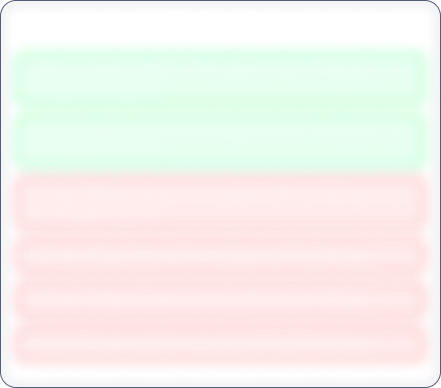Year End Sale 50% off
Safari Industries (India)

No Data Available
Investor Sentiment
Safari Industries (India) Share price and Fundamental Analysis
Key Metrics
Included In
Stock Returns
Stock Heatmap

No Stocks
Smart Score

Unlock Smart Score
See Detailed Analysis & Insights


Unlock Insights
See Detailed Analysis & Insights
Technicals
Returns Calculator
If you would have investedResearch Report
No Research Report
Corporate Action
Financials
Key Ratios
ROE
Avg ROE (3 Yrs) : NaN%
ROCE
Avg ROCE (3 Yrs) : NaN%
ROA
Avg ROA (3 Yrs) : NaN%
NPM
Avg NPM (3 Yrs) : NaN%
Dividend History
5 Year FactSheet
Documents

No Data Available
News
Safari Industries (India) Management and History
Company Management


Unlock Management Data
See Detailed Analysis & Insights
Company History
Started as a partnership firm in 1974 to manufacture plastic moulded luggage at Bombay, Safari Industries (India) Limited [SIIL] became a private limited company in 1980 and a public limited company in Feb.'86. It was promoted by Sudhir M. Jatia. The Company is engaged in the manufacturing and marketing of luggage and luggage accessories.
The company manufactures injection moulded plastic articles and vacuum formed plastic articles, at its plants at Bombay and Halol, Gujarat. The unit at Mumbai is mainly an assembly shop manufacturing plastic moulded luggage from bought out components. Fully integrated plant at Halol, for the manufacture of plastic moulded luggage, was set up in 1982 with an installed capacity of 840 tpa. The capacity of this plant was increased to 1500 tpa in 1985. The company came out with a public issue in Mar.'86 to part-finance the expansion project. The company expanded its capacity at its Halol plant from 1 lac peices to 2 lac peices pa, in 1993-94.
Company launched the poly carbonate luggage range in the month of March, 2014. It opened almost 50 exclusive retail stores. It introduced new product lines such as laptop bags, back packs, etc. which are fast selling items in the year 2014. Safari Manufacturing Limited, wholly owned subsidiary of the Company was incorporated on 9th November 2021 and with the incorporation, the Company commenced its commercial production/manufacturing of luggage on 17th June 2022 at its newly set up factory situated at Halol, Gujarat.
Safari Industries (India) Share Price
Safari Industries (India) share price reflects investor sentiment toward the company and is impacted by various factors such as financial performance, market trends, and economic conditions. Share price is an indicator which shows the current value of the company's shares at which buyers or sellers can transact.
Safari Industries (India) Market Cap
Market capitalization of Safari Industries (India) indicates the total value of its outstanding shares. Marketcap is calculated by multiplying share price and outstanding shares of the company. It is a helpful metric for assessing the company's size and market Valuation. It also helps investors understand how Safari Industries (India) is valued compared to its competitors.
Safari Industries (India) PE Ratio
Safari Industries (India) PE ratio helps investors understand what is the market value of each stock compared to Safari Industries (India) 's earnings. A PE ratio higher than the average industry PE could indicate an overvaluation of the stock, whereas a lower PE compared to the average industry PE could indicate an undervaluation.
Safari Industries (India) PEG Ratio
The PEG ratio of Safari Industries (India) evaluates its PE ratio in relation to its growth rate. A PEG ratio of 1 indicates a fair value, a PEG ratio of less than 1 indicates undervaluation, and a PEG ratio of more than 1 indicates overvaluation.
Safari Industries (India) ROE (Return on Equity)
Return on Equity (ROE) measures how effectively Safari Industries (India) generates profit from shareholders' equity. A higher ROE of more than 20% indicates better financial performance in terms of profitability.
Safari Industries (India) ROCE (Return on Capital Employed)
Return on Capital Employed (ROCE) evaluates the profitability of Safari Industries (India) in relation to its capital employed. In simple terms, ROCE provides insight to investors as to how well the company is utilizing the capital deployed. A high ROCE of more than 20% shows that the business is making profitable use of its capital.
Safari Industries (India) Total Debt
Total debt of Safari Industries (India) shows how much the company owes to either banks or individual creditors. In simple terms, this is the amount the company has to repay. Total debt can be a very useful metric to show the financial health of the company. Total debt more than equity is considered to be a bad sign.
Safari Industries (India) Debt to Equity Ratio
The Debt-to-Equity (DE) ratio of Safari Industries (India) compares its total debt to shareholders' equity. A higher Debt to Equity ratio could indicate higher financial risk, while a lower ratio suggests that the company is managing its debt efficiently.
Safari Industries (India) CAGR (Compound Annual Growth Rate)
CAGR shows the consistent growth rate of Safari Industries (India) over a specific period, whether it is over a month, a year, or 10 years. It is a key metric to evaluate the company’s long-term growth potential. Main metrics for which CAGR is calculated are net sales, net profit, operating profit, and stock returns.
Safari Industries (India) Technical Analysis
Technical analysis of Safari Industries (India) helps investors get an insight into when they can enter or exit the stock. Key components of Safari Industries (India) Technical Analysis include:
Support Levels (S1, S2, S3)
There are usually multiple support levels, but the main support levels for a stock are S1, S2, S3. Support levels indicate price points where stock might get support from buyers, helping the stock stop falling and rise.
Resistance Levels (R1, R2, R3)
There are usually multiple resistance levels, but the main resistance levels for a stock are R1, R2, R3. Resistance levels represent price points where Safari Industries (India) shares often struggle to rise above due to selling pressure.
Safari Industries (India) Dividends
Dividends refer to the portion of the company’s profits distributed to its shareholders. Dividends are typically paid out in cash and reflect Safari Industries (India) ’s financial health and profitability.
Safari Industries (India) Bonus Shares
Bonus shares are usually given by companies to make the stock more affordable, increase liquidity, boost investor confidence, and more.
Safari Industries (India) Stock Split
Stock split increases the number of its outstanding shares by dividing each existing share into multiple shares. When the company offers a stock split, the face value of the stock reduces in the same proportion as the split ratio.
Safari Industries (India) Financials
The financials of Safari Industries (India) provide a complete view to investors about its net sales, net profit, operating profits, expenses, and overall financial health. Investors can analyze financial data to assess the company’s stability and also understand how the company has been growing financially.
Safari Industries (India) Profit and Loss Statements
The profit and loss statement of Safari Industries (India) highlights its net sales, net profit, total expenditure, and operating profits in the current financial year. This Profit and Loss statement is crucial for evaluating the profitability and financial stability of Safari Industries (India) .
Safari Industries (India) Balance Sheet
The balance sheet presents a snapshot of Safari Industries (India) ’s assets, liabilities, and equity of shareholders, providing insights into the financials of the company.
Safari Industries (India) Cashflow Statements
Cashflow statements track the company's cash inflows and outflows over a period. It is an essential tool for understanding how well the company manages its liquidity and finances.


